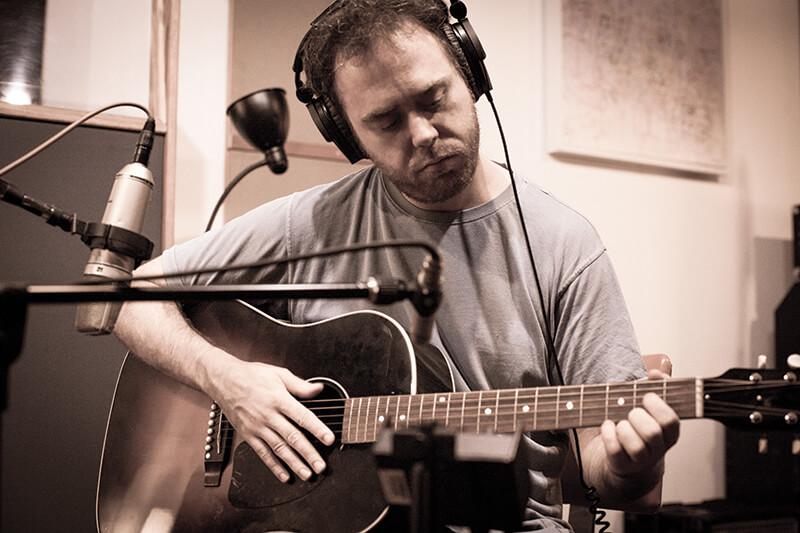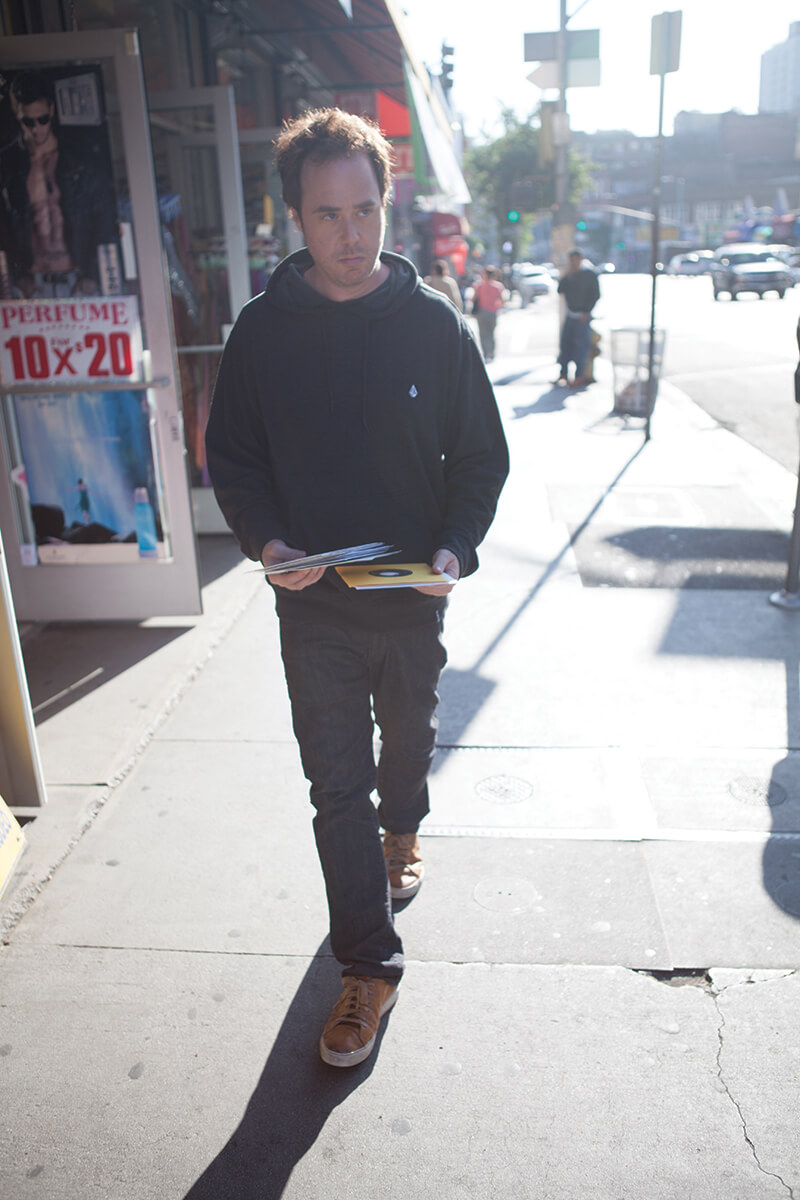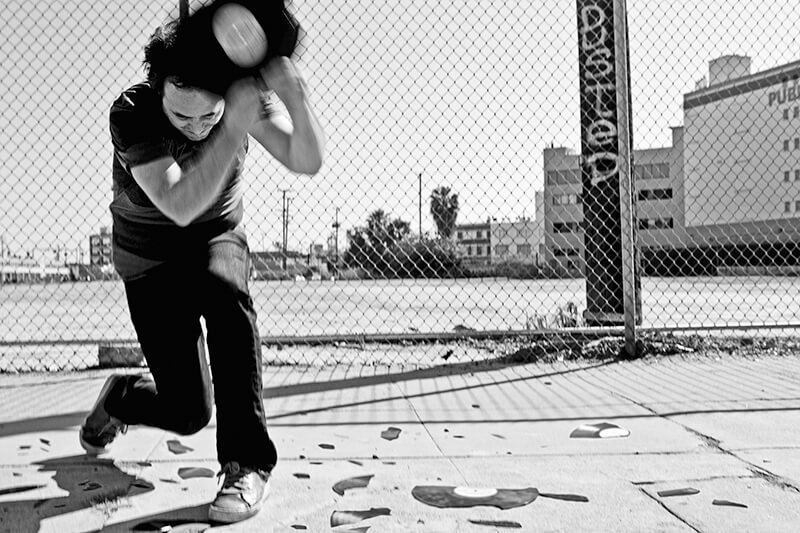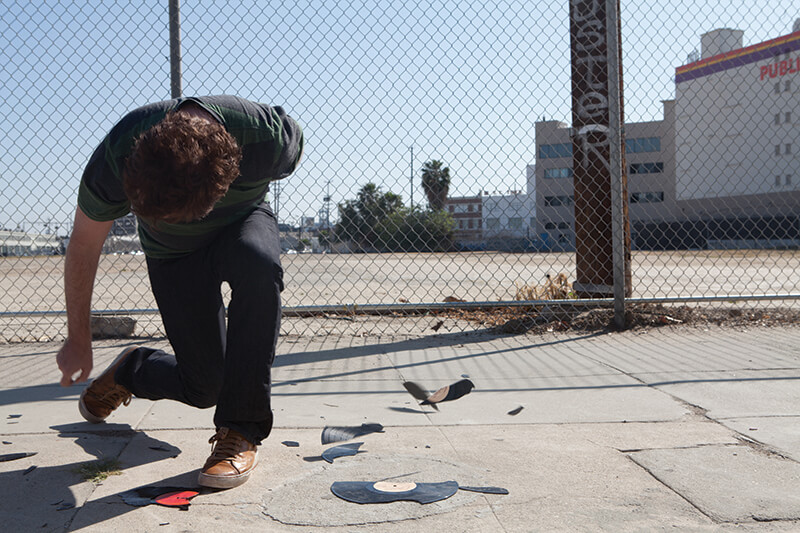After almost three decades in the music business, Cut Chemist (aka Lucas MacFadden) is redefining himself, yet again. It’s been about 12 years since Cut Chemist released his highly praised debut The Audience’s Listening, a seamless mix of hip-hop, Latin fusion, trip hop, funk, electronica and everything in between. In that time, the internet has upended the music business and being a DJ has become something completely different from what it once was.
Before there was a glut of bedroom DJs using their laptops, MacFadden was carving out a place as one of the best sample-based DJ’s on the West Coast, carting around bins of records. In the ’90s, he helped start hip-hop favorites Jurassic 5, and was a founding member of Latin supergroup Ozomatli. After enjoying the success of his solo debut in 2006, he toured and recorded DJ Shadow, featured on countless DJ mixes and released the Madman EP.
Last month, Cut Chemist released his long-awaited sophomore release, Die Cut. According to MacFadden, work began on the album in 2010. Recently, he spoke with Performer about making the album, finding inspiration in a community of musicians, and how to make it in the music business in 2018.
He says he started collecting samples for Die Cut about eight years ago, but after the loss of two family members that year, work stalled. He credits friend and collaborator Carlos Niño for getting him energized and refocused on the album.

“I was still touring with DJ Shadow and I started collecting samples and ideas for the new album,” he says. “But work really didn’t kick into high gear until I started working with Carlos Niño.”
It was Niño who first suggested MacFadden work with live instrumentation. At the time, Niño – an acclaimed producer, composer, musician and radio host who has worked with Ninja Tune and Warp Records – was working with a slate of musicians including drummer Deantoni Parks (Flying Lotus, John Cale, Photek) and bassist Lonnie “Meganut” Marshall (Joe Strummer, Weapon of Choice) and suggested MacFadden ask them to play.
“I played Carlos a few tracks I had been working on and he suggested we expand a bit,” MacFadden says. “Deantoni flew in from Moscow where he was touring with John Cale and we got into the studio on Thanksgiving Day in 2010 and worked on six songs. It was incredible. I used all of it, both to scratch and as tracks.”
Once the drum tracks were established, MacFadden said he could see it intertwining with the sample-based work that he had already put together.
“It wasn’t that hard to envision the rest,” he adds.
With Niño’s help, MacFadden assembled a team of collaborators including old Jurassic 5 friend Chali 2na, rap legend Biz Markie, Tune-Yards, Laura Darlington, DNTEL, Vox Populi and Myka 9 to work with on the album.
“We had the Tune-Yards play on a couple of things, Nate Brenner played on upright piano and Merrill Garbus did a few vocal takes which I chopped up,” MacFadden says. “From my point of view, it was like assembling a full band for the project.”
Recording for the sessions took about two years to finish, MacFadden comments. The goal then was to blend those takes and arrange the new songs. He points to “Home Away From Home” and “Metalstorm,” two tracks on Die Cut that don’t sound like live tracks.
“These tracks don’t appear to have live musicians playing on them but they’re there,” he says. “I had a small learning curve with how much of the samples to blend, when and where you use them. I wanted to maintain my integrity as a sample-based producer, but I also wanted to blur the lines a bit.”

On the song “Plain Jane,” which features Hymnal & The Precious Hectic, Cut Chemist does just that. The song is recorded live with MacFadden playing most of the instruments.
“That was kind of my baby for this record,” he says. “I had been listening to rock and psychedelic records and that Eddie Kramer type of backwards guitar and it inspired a bit of this record in that it blended genres. It was a big test for me. I learned to listen and find where to push and where to pull back a little for that perfectly blended mix.”
MacFadden recorded the acoustic track on the song on his father’s old Martin guitar.
“It’s my favorite song for a couple of reasons, in that it was personal and a kind of a pivotal point” he says.
Work on Die Cut took another backseat in 2013 when Jurassic 5 reunited and toured the world. MacFadden hit the road again soon after, touring with DJ Shadow supporting the Renegades of Rhythm project. This time, MacFadden was eager to return to the project.
“I was drawn back into working with a band. It was a kind of Ozomatli environment. With that band, I could trade off solos with a tabla player and it felt like being a DJ was being a musician,” he says. “It was nice to not be so isolated and that’s what Carlos helped with, he brought in this community of people. It was really fun.”
There is a plethora of collaborations on Die Cut but a few stand out to MacFadden as special, including his song with Biz Markie called “Moonlightin’”.

“I’ve known Biz for about 20 years and it was just so amazing to work together,” MacFadden says. “Throwing him in the mix on a personal level was special. He’d call me up back in the day and we’d head out record shopping, maybe hang out and record. That day was no different.”
MacFadden says he hadn’t seen Biz Markie for a while and he just wanted to hang out.
“He comes by the house and we just started messing around with beats and he suggested we do a song,” he says. “He’s actually incredible because he had the sample and the song all mapped out. I couldn’t really hear it at first but he has a great ear and it magically worked out.”
He adds, “He went into the closet and just lit it up. That song is just a vibe. And that’s how it worked back in the day, you’d buy some records, hang out, listen and create.”
While Carlos Niño may have provided personal inspiration for McFadden, ’80s dark ambient punks Vox Populi provided him musical inspiration.
“They actually kicked off the whole record. I had used their music on a sample before when MySpace was still a thing. I asked them to send a few tracks and not only did they send original cassette recordings, they also sent new stuff, like little synth lines, etc.” he says.
You can hear some of the work on “Rhythm Method,” which also features Myka 9. The result, “hip-hop for a dark alley” as MacFadden calls it, was the most aggressive collaboration on the album.
“That tune probably took the most work,” he says. “It was a challenge figuring out how to balance all of the instruments on it. It was a pleasure to team up with Vox since I’ve been drawn to their proto-industrial [thing] for a while.”
As MacFadden points out, with changing technology musicians themselves have adapted to the times.
“I think the invitation to DJ has changed with new tech,” he says. “It used to be that you’d have to collect and crate around records and that eliminates people right there. Now all you need is a laptop, so everyone can do it.”

That’s both good and bad, he adds.
“There are certainly more people who really shouldn’t be DJs. They don’t have the turntable skills or the selections skills, but on the other hand it’s more open and that’s great. I recently saw a kid who was incredible on the turntables. He was this 10-year-old from Japan and should he be doing it? Absolutely.”
For McFadden, it’s turned up the heat to produce more original music and push the envelope with his live show.
“When I’m on stage I’m all about putting on a performance, not only with turntablism but with the myriad of media,” he says. “When I’m up there I’m also controlling a lot of visuals alongside the lighting guy. My performance is meant to be stimulating your ears and eyes.”
Another factor MacFadden has had to consider is the long dead route of selling thousands of CDs first then touring to support them.
“It’s all streaming and playlisting now,” he says. “I really don’t have an idea how it’s supposed to work. I’ve been scratching my head but it’s not just me, it’s the record companies, too. It’s a bit of a battle to make things work.”
On the other hand, he said, vinyl copies of Die Cut are already sold out through the Cut Chemist Bandcamp page.
“I even took it one step further with the records, doing custom covers,” he says. “I went to art school so I spent some time using spray paint and stencils to create one-of-kind covers for some of the albums, even doing custom covers for some of the cities I played.”
In the end, MacFadden says he’s happy to be playing music and he’s achieved what he set out to do with the new record.
“It’s about growing as an artist and the new record does that,” he says. “I’m trying to be more of a songwriter that loves hip-hop records. It’s going well and I’m happy digesting it all.”
Photos by Joseph Armario
